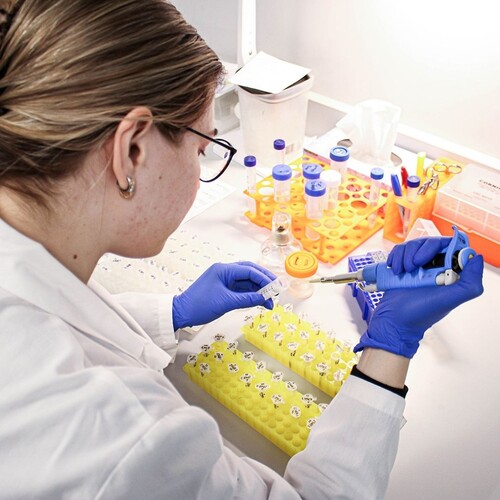
With the steady increase in maternal age, genetic disorders in unborn children are also on the rise. Understandably, expectant parents are anxious to know about the health markers of their unborn so they can consider the best prenatal and postnatal care options for their child. Non-invasive prenatal testing (NIPT), is one of the best ways to know about such disorders and can be done as early as 10 weeks into the pregnancy. It is also well-known that these NIPT blood tests are successful in identifying Trisomy 13, 18, and 21 with extreme accuracy. But what exactly is a trisomy and what do these three trisomies mean in particular?
If you have these questions, then here is a comprehensive answer to your queries.
What is a trisomy?
Human beings generally carry 23 pairs of chromosomes. In this context, a trisomy can be defined as a genetic disorder wherein an individual carries three sets of chromosomes instead of the usual two. That being said, it doesn’t necessarily affect every chromosome pair. Hence, the disorders are named trisomy 13, trisomy 18 and trisomy 21 because the condition occurs only in these chromosomes out of the total 23. However, if this condition is present in even one chromosome, then there is a very high chance of a genetic disorder with debilitating symptoms.
Here are the more detailed symptoms of trisomy 13, 18, and 21 respectively.
Trisomy 13 (Patau Syndrome)
As mentioned above, the trisomy occurs in chromosome 13, thereby causing severe intellectual disability, microcephaly that is a small head, micrognathia that is a small jaw bone, seizures and a lot of other complications. Most cases of Patau Syndrome are fatal and the babies don’t survive past their first year. However, this disorder occurs in only 1 in 10,000 fetuses and the causes are often genetic.
Trisomy 18 (Edward’s Syndrome)
Edward’s Syndrome is caused by a trisomy in chromosome 18, leading to growth retardation in the womb and consequently, low weight at birth. Other common conditions include heart defects, problems in other major organs, as well as intellectual disability, microcephaly, and micrognathia mentioned above. Most cases of Edward’s Syndrome are also fatal.
Trisomy 21 (Down Syndrome)
The most common of the 3 genetic disorders, Down’s Syndrome occurs due to the presence of trisomy in chromosome 21. Some of the telltale signs of this syndrome are distinct facial features, mild level of intellectual disability, thyroid, heart, skeletal diseases and other physical issues, susceptibility to respiratory infections and more. However, the mortality rate among children suffering from Down Syndrome is a lot less than the above two chromosomal disorders.
Thus, by clearly understanding the severe nature of these disorders, the role of prenatal testing becomes even more paramount, apart from using it as a prenatal paternity test or a test to determine the gender of the baby.
A leader in the field of prenatal medical diagnostics, Prenatal Genetics is run by highly proficient research scientists who are pioneers in this department. Furthermore, with a significant $100 price drop on our NIPT blood tests, it is now the best time to get the procedure done. With a faster turnaround time, and express shipping facilities, our tests also offer a convenience factor apart from affordability. Contact us today to learn more about our tests and services.



